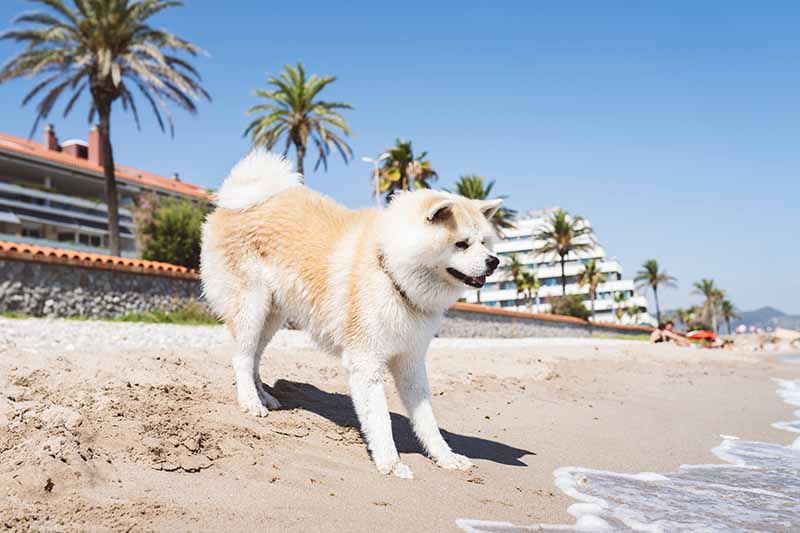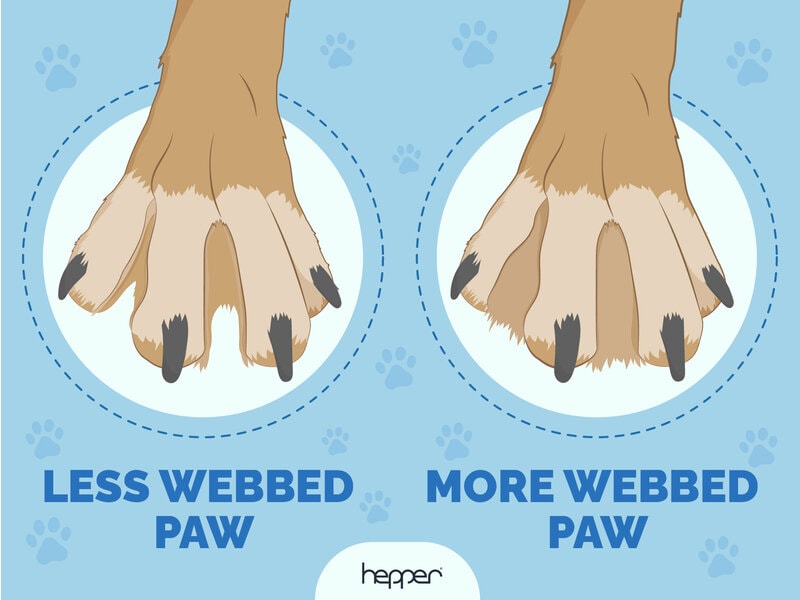Do Akitas Like Water & Can They Swim? Safety Tips & Facts
Updated on

When you’ve been thinking about which breed of dog might be the best fit for you and your family, it’s essential to take your lifestyle into account. Just because you love the St. Bernard, for example, that doesn’t mean you should get one if you live in a tiny apartment.
If you spend a great deal of time near and in the water, you’ll want a breed that loves the water as much as you. If you have your heart set on the Akita, you’ll want to know if they actually like water. This comes down to the individual dog: Some Akitas love the water and others won’t go near it.
Here, we discuss how Akitas generally feel about water, which has much to do with their background, and we also provide tips to help you teach your dog to swim or at least tolerate being around water.
Background on the Akita
What a dog is bred to do can enormously impact their temperament. The Akita’s ancestry goes back to the Akita prefecture of Japan about 1,000 years ago. They are members of the spitz family, which includes the Malamute, Husky, Chow Chow, and Samoyed, to name a few.
The Akita was bred for hunting large prey, such as wild boars and bears, and for pulling sleds and dog fighting. The first Akita to grace North American shores was in 1937, when Helen Keller was gifted one while visiting Japan. However, they almost went extinct during World War II. Fortunately, American soldiers fell in love with these dogs and brought a few puppies back to the States after WWII.
The Akita was recognized and placed in the Working Dog class by the American Kennel Club in 1972. They are the national dog of Japan and are considered a symbol of happiness, health, and longevity.

Do Akitas Like to Swim?
This entirely depends on the dog. The Akita was not bred to swim primarily because they were bred in northern Japan and spent their time hunting and pulling sleds on land. While they do have webbed feet, the webbing acts like snowshoes, giving them better balance for walking over snow. They are not designed for use in water.
Akitas also have plush double coats, and some dogs don’t like when their coats are soaking wet. In fact, getting their coat wet can weigh them down, and it takes a long time for it to dry. A wet coat will not properly insulate the Akita from hot or cold temperatures.
Generally speaking, Akitas are not naturally geared for swimming—many dogs enjoy it and others never take to it. Some Akita owners report that their dogs absolutely love swimming, while others won’t even go outside when it’s raining!

Teaching Your Akita to Swim
Not all dogs swim naturally, and while some Akitas might take to the water without any issues, others might need a helping hand 1. But this is only if your Akita seems comfortable enough near water; if they are downright afraid, you should never force them into the water.
Life Jacket
You should start by getting a life vest for dogs, which keeps them safe and can help their confidence because they can’t sink. A dog without a life jacket might panic, which can quickly lead to drowning. The life jacket also literally teaches the dog how to swim correctly. Since the dog is balanced, they will learn to paddle all four legs. Without the floatation device, they might only paddle with their front legs.
You’ll need to look for a jacket that will fit your Akita but have room for adjusting. It should be snug but not too tight. Aim for a brightly colored jacket that has reflective material and a handle on the back. The handle should be strong enough that you can pull your dog out of danger, so it needs to bear their weight without detaching. Finally, look for a D-ring to which you can attach a leash; you might need it in certain areas, like a public beach.

Bribe
You’ll want to entice your dog into the water if they are reluctant. Ensure that they have their life jacket on, and use a favorite toy or treats to get them to at least wet their paws. Stand in the water yourself, and try throwing a ball in the shallow water.
You can keep hold of the handle at this time if they seem like they want to go in deeper. But if they are happy enough in the shallows, just spend time playing with them there.
Slowly move in deeper, and encourage your dog to follow you with praise and treats. You’re building a positive experience with your dog and water, and they might want to continue enjoying the water.
The moment that your dog seems uncomfortable, move into shallow water or exit the water completely. It’s best to start this entire process at a lake or any place with a gentle slope into the water.
Swimming pools aren’t necessarily the best starting point for dogs because the artificial blue color and the smell of chlorine can be off-putting.
Keeping Your Akita Safe in the Water
Akitas don’t do well in hot weather because of their dense double coats. While swimming can help cool them off, spending most of the day at a beach or pool will be difficult for your Akita. That said, you’ll also want to avoid allowing your dog to swim when it’s too cold, or they will be at risk of developing limber tail (also known as swimmer’s tail) or hypothermia. If they lose the ability to use their tail (though this doesn’t happen immediately) or are shivering, you must get them to your vet or the closest emergency veterinary clinic immediately.
Water intoxication is another issue that occurs when a dog swallows too much water while they are swimming. The most common sign of water toxicity is throwing up after swimming.
Be sure to look out for any hazards, particularly in ponds or other natural bodies of water. There is the potential for dangerous animals like snapping turtles, and in some parts of the world, there could be crocodiles or alligators to watch out for.
Finally, come prepared with plenty of fresh and clean drinking water, and have access to shade. Don’t keep your Akita outside on a hot day for too long.

Conclusion
Whether your Akita will love water and swimming ultimately depends on your dog’s temperament. Swimming in water is essentially foreign to the Akita’s DNA, so some will adore swimming, while others don’t even want to get their paws wet.
Never force them to go into the water if they seem reluctant or scared. This will only make them even more afraid. Always stick to positive reinforcement, and if you are patient and understanding, your reluctant Akita might even become a water-loving dog!
Featured Image Credit: PintoArt, Shutterstock













